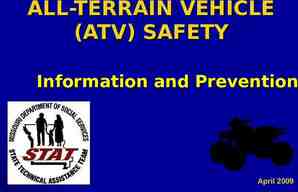Hydrogen Sulfide (H2S) Emergency Response & Rescue 1 H2S
28 Slides3.52 MB

Hydrogen Sulfide (H2S) Emergency Response & Rescue 1 H2S

Objectives: Purpose of Contingency Planning Emergency Response Procedures

What is a Contingency Plan?

Contingency/Emergency Response Plan Emergency Procedures: Employee responsibilities Immediate action plan Notification information Safety equipment and location of breathing air equipment Location of first aid kits, litters, resuscitators, and spare oxygen bottles.

Contingency/Emergency Response Plan Characteristics of H2S & SO2 Facility Description Training and Drills Responsibilities/duties of essential personnel Onsite or classroom drills Training Briefing of public officials

Contingency & Emergency Response Plan Is there the potential for H2S Yes No 10ppm CAUTION Alert personnel –Monitor area Investigate cause-Check equipment What is concentration and source Yes 10ppm Evacuate crosswind and upwind from source Wear all required PPE Continue H2S awareness according to your training Yes Return to work only after work area has been approved and cleared by qualified PIC

Contingency & Emergency Response Plan 7 OSES H2S Program Employee Responsibility Supervisor/Management Responsibility HSE Support Team Responsibility

Monitoring

Warning Signs

Warning Signs

Wind Indicators Wind indicators placed at locations and heights which enable free movement and accurately indicate wind direction. Indicators visible from normal entrances to the facility. Work tasks should be performed upwind from source to reduce potential exposure. Personnel should develop wind direction consciousness.

H2S Release Dispersion Models 13

Flares

Contingency & Emergency Response Plans Sign in/out Sheet Muster Areas Wind Direction Low Lying Areas Location of Emergency 15 Equipment

Emergency Response Recognize Problem Emergency Equipment Take Control Call for Help 16

Emergency Contacts Location Directions 17

Rescue Procedures When there is potential for presence of H2S, there is potential for someone to be overcome. Rescue has to be done safely

Rescue Procedures Cardinal Rule of H2S rescue: Rescue must not be attempted unless the rescuer is adequately protected!

Protect yourself first! You can’t help someone else if you go down! Chances are, if the air was bad for them, it’s bad for you too! Rescue Procedures

Rescue Procedures If possible, remove victim without entering H2S area Use lifelines or safety harnesses If entry into H2S area is required, first don SCBA

Rescue Procedures Victim needs to be moved to safe area If more than one victim, move victim with longest exposure first Once victim(s) are removed from H2S area, determine if they are breathing

Rescue Procedures If not breathing Call 911 or other emergency #’s Include physical address Check for pulse Begin rescue breaths or CPR as needed

Follow-up Procedures Anyone who has been overcome by H2S should seek medical attention Should have medical clearance prior to returning to work H2S does not cumulate in body, however, there may be lingering effects: Pulmonary edema Dizziness Photophobia

Requirements for Site-Specific Orientation Route(s) of egress Use and location of wind indicators Emergency assembly area(s) Applicable warning signals Response in event of emergency Use and location of personal protective equipment (PPE) Hands-on training with H2S detectors used on site

Respiratory Protection Describe appropriate respiratory protection. Describe areas where H2S may accumulate.

H2S Staying Alive Contingency & Emergency Response Plans Recognize the Problem Emergency Equipment Take Control Call for Help 27

Hydrogen Sulfide (H2S) Emergency Response & Rescue 28 H2S







